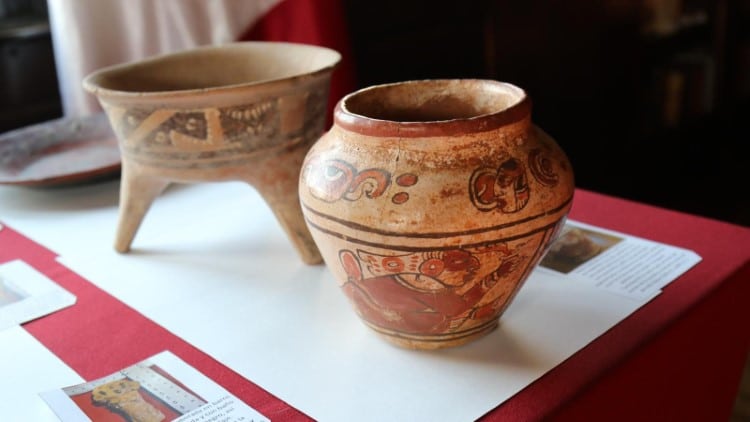
Photo: Esteban Moctezuma Barragán
In the newest case of a thrift store find actually being an important artifact, a woman in Washington, D.C., has just returned a genuine Mayan vase she purchased for $3.99. About five years ago, Anna Lee Dozier was perusing the 2A Thrift Store in Clinton, Maryland, when the vase caught her eye.
Left on a clearance shelf near the register, the vase intrigued Dozier, who has worked with Mexican Indigenous communities in her role as a human rights advocate with Christian Solidarity Worldwide. So, she scooped it up, paid the nominal price, and brought it home.
“I could see that it had some kind of link to Mexico, in terms of what it looked like, and since it's a country that I work on and it's really important to me, I thought it would be just a nice little thing to take home and put on the shelf and to remind me of Mexico,” she told NPR.
Dozier could see that the vase was old, but she assumed that it was a replica and didn't think much of it until a recent visit to Mexico City's National Museum of Anthropology. While looking at an exhibition of Mayan vases there, she realized just how similar they were to the pottery she had at home.
To quell her doubts, she asked museum staff what she'd need to do to get her own vase authenticated. They referred her to the Mexican embassy, who asked her to send in images of the thrift store find. Upon viewing the material she provided, Mexico's National Institute of Anthropology and History contacted her to confirm that the vase was real and that they wanted it back.
Happy to comply, Dozier worked with authorities to ensure that the vase, which dates to between 200 CE and 800 CE, made its way home. Now, after a ceremony at Washington D.C.'s Cultural Institute of Mexico, the vase is on its way to the Museum of Anthropology, where it will be studied before being sent to one of the country's smaller museums.
Un valioso testigo de nuestra historia maya regresa a su hogar #México.
Gracias a la generosidad de Anne Lee Dozier, ciudadana estadounidense, recuperamos una vasija clásica, datada entre el 200 y 800 d.C. Esta joya histórica será reintegrada al acervo del @INAHmx para… pic.twitter.com/ySsF1vCU5k
— Esteban Moctezuma Barragán (@emoctezumab) June 18, 2024
Dozier was thrilled to play a role in getting the vase back to its homeland. “I would like it to go back to its rightful place and to where it belongs,” she told a local news outlet. “I'd also like it out of my home because I have three little boys and now I'm petrified, well it's gone now, but I was petrified that at any moment I could be the one after 2,000 years to finally wreck it.”
Interestingly, this thrift store find was just one of many artifacts that the Cultural Institute was shipping back to Mexico. Most of them were dropped off anonymously. The organization ships artifacts back monthly, with about 90% of them being deemed authentic once they arrive.
Mexican Ambassador Estaban Moctezuma Barragan, who attended the ceremony, applauded Dozier's decision to step forward and send the vase back rather than attempt to sell it for a high value.
“When you have strong roots, and you know them, and you honor them,” he shared. “She recognized that a whole country, a whole culture, cares about it, and we are deeply in gratitude with her.”
For Dozier, there's no doubt in her mind that she did the right thing.
“Giving it back feels so much better than it would if I put it on eBay and I got a bunch of money,” she said. “It's really important to recognize that some of these things, especially with such historical and cultural value to an entire country and people—you can't really put a number on that.”
A woman named Anna Lee Dozier bought a vase at a thrift store for $3.99, but she found out it's actually nearly 2,000 years old and worth a lot more.
h/t: [NPR]
Related Articles:
TikToker’s $50 Facebook Marketplace Find Sells for $85,000 at Sotheby’s
Thrift Store Painting Bought for $4 Turns Out to Be an N.C. Wyeth Painting Worth $250K
Magnificent 18th-Century Chinese Vase Accidentally Discovered in Someone’s UK Kitchen
Antique Map Acquired at Estate Sale Turns Out to Be an Extremely Rare 14th-Century Portolan Chart






















































































